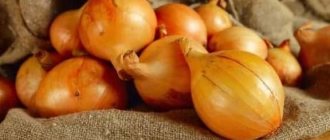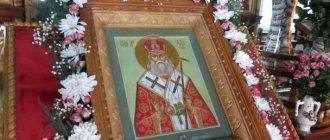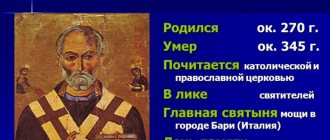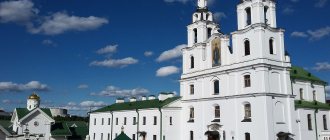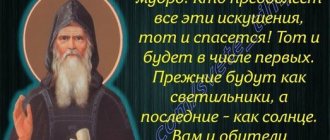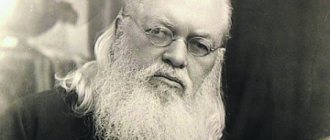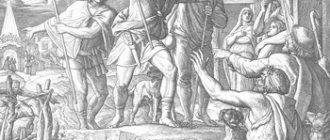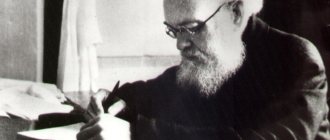Description
The painting depicts the Evangelist Luke in traditional iconography. The old man sits at the table writing the Gospel, behind him is the symbol of the evangelist - a calf. The waist-length cut of the figure and the small size of the canvas indicate its chamber purpose. The space of the room is barely defined, as are the attributes, which focuses the viewer's attention on the character's face and hands, which are clearly defined.
The canvas is made in warm brown tones, which corresponds to the color scheme of painting from the Golden Age of Dutch art. The Evangelists by Terbruggen and Jan Lievens may be his iconographic predecessors, in turn a forerunner of Rembrandt. This is a rare example of religious painting by Hals, who was an excellent portrait painter and almost never painted saints. An expert on the artist’s work, Slive emphasized that “the chance of finding a religious painting by Hals is about the same as finding a still life by Michelangelo”[1].
The head of Luke bears a resemblance to the drawing of the apostle “James the Elder” by Goltzius (Leiden, 1586). The heads of Saint Luke and Matthew were apparently painted from the same model. As Slive points out, Luke's head is also very close to the image of Provost Johan Damius from the Banquet of the Officers of the Civil Guard of St. Hadrian by Hals (1620s).[1]
- Hals, "Banquet of the Officers of the Civil Guard of St. Adrian" (detail), 1620s
- Hendrik Goltzius. "Saint James", 1586
- Terbruggen, Hendrik. "Saint Luke", 1622
- Rembrandt. "Saint Matthew", 1661
The Path of the Clergyman
In 1918, the Russian Orthodox Church was persecuted. Priests and believers were repressed, and temples and shrines were destroyed.
At this time, Valentin Feliksovich often participated in public debates, where he argued with atheists. At one of these meetings, Bishop Innocent was present, who said: “Doctor, you need to be a priest.”
Bishop of Tashkent and Turkestan Innokenty (Pustynsky) and priest Valentin Voino-Yasenetsky (right). 1921 Photo: Commons.wikimedia.org
A week later, on the feast of the Presentation of the Lord in 1921, the doctor was ordained a priest*. In May 1923, the exiled Bishop Andrei of Ufa secretly tonsured Valentin Feliksovich a monk with the name Luke. On May 31, 1923, Hieromonk Luke was ordained Bishop of Tashkent and Turkestan. And in June of the same year, Luka was arrested by security officials - the GPU.
Exhibitions
- 1962. New York. "Saint Luke" and "Saint Mark" exhibited
- 1960, 1962. Leningrad, Hermitage
- spring 1965. Pushkin Museum im. A. S. Pushkina (Moscow). Exhibition of Western European painting of the XV-XVIII centuries.
- 1989/1990. Washington, London, Harlem. Retrospective of Frans Hals.
- winter, 2005. Pushkin Museum im. A. S. Pushkin. “Frans Hals’s paintings “The Evangelist Luke” and “The Evangelist Matthew.”
[6] - summer, 2012 (until September 9). Pushkin Museum im. A. S. Pushkin, exhibition “The Return of St. Luke. Western European painting of the 6th-18th centuries from museums in Ukraine"
Military surgeon
The Great Patriotic War began, and the exiled bishop became the chief surgeon of the evacuation hospital. This happened after his telegram to Kalinin: “I, Bishop Luka, Professor Voino-Yasenetsky, am serving exile in the village of Bolshaya Murta, Krasnoyarsk Territory. As a specialist in purulent surgery, I can provide assistance to soldiers at the front or in the rear, wherever I am entrusted. I ask you to interrupt my exile and send me to the hospital. At the end of the war I am ready to return to exile.”
Bishop Luke (Voino-Yasenetsky) Date 1937–1940. Photo: Commons.wikimedia.org / Court of the USSR
The exile performed four to five operations a day, visiting other hospitals where he was invited to consult: for example, in just three weeks of 1942 he diagnosed 87 patients.
In 1942, Archbishop Luke** received the Patriarchate’s proposal to head the Krasnoyarsk see without interruption from surgery, and in 1944, with the hospital moving to Tambov, he headed the Tambov diocese, where he combined archpastoral service and the work of a surgeon. Under the leadership of Archbishop Luke, over the course of several months in 1944, more than 250 thousand rubles were collected for the front. for the construction of a tank column named after Dmitry Donskoy and an air squadron named after Alexander Nevsky. In total, about a million rubles were transferred in less than two years.
In December 1945, for helping the Motherland, Archbishop Luka was awarded the medal “For Valiant Labor in the Great Patriotic War.” And at the beginning of 1946, by the resolution of the Council of People's Commissars of the USSR “For the scientific development of new surgical methods for the treatment of purulent diseases and wounds, set out in the scientific works “Essays on Purulent Surgery,” completed in 1943, and “Late resections for infected gunshot wounds of joints,” published in 1944 "Professor Voino-Yasenetsky was awarded the Stalin Prize of the first degree in the amount of 200,000 rubles, of which he donated 130 thousand rubles to orphanages.
Notes
- ↑ 123456
Colnaghi. Salomon Lilian. Frans Hals. St Mark. A lost masterpeace rediscovered. MMVIII - S. Slive, Frans Hals, exhibition catalogue, National Gallery of Art, Washington DC, 1 October - 31 December 1990, Royal Academy, London, 13 January - 8 April 1990, Frans Halsmuseum, Haarlem, 11 May - 22 July 1990
- C. Grimm, Frans Hals, The Complete Works
, 1990 - ↑ 1 2
Provenienz
(unspecified)
(inaccessible link). Access date: August 29, 2012. Archived April 7, 2013. - ↑ 12
The Adventures of St. Luke // Your Leisure - ↑ 1234
Paintings by Frans Hals “Evangelist Luke” and “Evangelist Matthew” - ↑ 123
Tatiana Balanovskaya. Fates and adventures of the Odessa Khals. From the series of programs “Museum Secrets” (Odessa Museum) - ↑ 123456
Alexey Radinsky. Stealing “St. Luke”: theft of works of art in Soviet cinema // ART-Ukraine Magazine, September 27, 2010 - From 1812 - in the Crimean church, probably until the 1850s in the Mattioli collection (Salerno), from 1955 - anonymous purchase as the work of Luca Giordano, from 1955 - art dealer Silvio Severi (Milan); 20 October 1972 - Christie's (London), lot 83, as an anonymous "Portrait of a Bearded Man", in 1973 Klaus Grimm suggested that it was a work by Hals, known from the catalog compiled by de Groot in 2008. — private collection (Germany); in 2008 acquired by art dealers Salomon Lilian and Konrad Bernheimer; since 2009 - art dealer of P. & D. Colnaghi. At some point it was recorded to be turned into a portrait - a white pleated collar was added to the robe, after 1973 it was restored
- 1997: sold at auction for $4 million; in 2009 it was put up for 5.5 million pounds (The Season's Most Intriguing Auctions // Forbes, March 16, 2009)
- Only provenance date: July 3, 1997 - anonymous seller at Sotheby's (London), acquired by the Getty Museum
- Saint John the Evangelist // Getty Museum
- The Usmanov Foundation arranged the return of “St. Mark” to the Pushkin Museum // RIA Novosti
- Linnik I. V. “Dutch painting of the 17th century and problems of attribution of paintings.” "Art", 1980
- ↑ 1 2 3 4 5 6
Film from the
“Lubyanka” series.
Series
The Rape of St. Luke.
ORT, 2004 - ↑ 12345678910
A. Levit. THE PRICELESS PAINT BY FRANS HALSE “ELUKE THE EVANGELIST” // Events and people Archival copy dated February 11, 2011 on the Wayback Machine based on the materials of the documentary “The Investigation Conducted...” - ↑ 12
Film from the series “The investigation was carried out.” Series “The Return of St. Luke. Modern version" (2006). - ↑ 1 2
Alexander LEVIT High-profile cases of the past: the theft of the painting “Evangelist Luke” by Frans Hals / Forgotten the slaughter
(undefined)
. lostart.org.ua. Date accessed: July 4, 2021. - ↑ 1 2 3 4 5 6 7
Film from the series
“Living History”
.
Series "The Rape of St. Luke" - Moscow detective: how “Saint Luke” by Frans Hals was stolen from the Pushkin Museum (Russian). moskvichmag.ru. Date accessed: July 4, 2019.
- Irina Mastykina.
Falshak
(undefined)
.
Top secret
.
Literature
- Catalog of the Museum of Western European and Oriental Art, Odessa,
1973, p. 27 - Linnik I. V. Frans Hals
. M., 1967 Linnik I.V. “Dutch painting of the 17th century and the problems of attribution of paintings.” "Art", 1980 - Y. Kuznetsov and I Linnik, Dutch Paintings in Soviet Museums,
New York and Leningrad, 1982 - I. Linnik, 'Newly Discovered Paintings by Frans Hals',
Art, 1959, no. 10 - I. Linnik, 'Newly Discovered Paintings by Frans Hals',
Communications of the State Hermitage Museum, XVIII (1960)
St. Luke and St. Matthew, at Odessa' , Oud Holland, LXXVI (1961)
1970-4, vol. I, pp. 100-3
, 1990
The Hague, 1770, vol. 3, p. 321, no. 124;
, St.
Petersburg, 1774, no. 1894; P. Lacroix, 'Musée du palais de l'Ermitage sous la règne de Catherine II', Revue Universelle des Arts XIII,
1862, p. 114, no. 1894 (reprint of Minich 1774);
, Amsterdam, 1858, vol. 2, p. 362
, 1910, Vol III, nos. 4-7
Markus von Frans Hals' , Maltechnik/Restauro I, 1974, pp. 21-31
(introduction by A. Chatelet), Paris, 1976 (translation of the Italian edition Milan 1974), 41, 42 (c1625)
From zemstvo doctor to chief surgeon
After graduating from the university, he served in the Kyiv Red Cross hospital and during the Russo-Japanese War he headed its surgical department in Chita, performing major operations on bones, joints and the skull.
Saint Luke. Icon of the early 21st century. Photo: Commons.wikimedia.org / Yuri Piftankin
During operations and treatment of the wounded, he was helped by sister of mercy Anna Vasilyevna Lanskaya, who was called the “holy sister” at the Kiev Red Cross Hospital for her kindness, meekness and deep faith in God, and she also took a vow of celibacy. Here, in Chita, the young surgeon obtained her consent to become his wife, and they got married. Anna Vasilyevna gave birth to four children in marriage and helped her husband with outpatient appointments and in maintaining medical history.
The young moved to the Simbirsk province, and Valentin Feliksovich became a zemstvo doctor. He and the paramedic made up the entire staff of the tiny Ardatov hospital, and the doctor worked 14–16 hours a day, combining universal medical work with long-distance visits to patients and organizational and preventive work in the zemstvo.
The Voino-Yasenetskys arrived in the village of Verkhny Lyubazh in the Kursk province when the zemstvo hospital with 10 beds had not yet been completed, and epidemics of typhoid fever, measles and smallpox had broken out. Valentin Feliksovich received patients on trips and at home, not sparing himself, traveled to epidemic areas, participated in zemstvo work, and carried out preventive and organizational work. Then he was transferred to the village of Lyubazh. The young doctor was loved: peasants throughout the Kursk and neighboring Oryol province turned to him, and the police chief got him fired for refusing to appear when he was called, stopping the provision of assistance to the patient.
In the fall of 1908, Valentin Feliksovich entered an externship at the Moscow Surgical Clinic of Professor Dyakonov and carried out colossal research work. He was the first in the world to develop approaches to spinal anesthesia, which makes it possible to anesthetize a specific area of the body without general anesthesia.
Valentin Feliksovich Voino-Yasenetsky, around 1910. Photo: Commons.wikimedia.org
In 1915, in Petrograd, he published the book “Regional Anesthesia” with his own illustrations, where, instead of the previous methods of layer-by-layer impregnation of everything that needed to be cut with an anesthetic solution, he proposed a new, elegant method of local anesthesia that interrupts the conduction of pain-transmitting nerves. In 1916, he defended this work as a dissertation and received the degree of Doctor of Medicine. But that will come later, but for now the young doctor was torn between work as a zemstvo doctor, family in Romanovka and research in Moscow.
In 1911, Voino-Yasenetsky headed the city, and soon the factory and district hospitals, as well as the military hospital in Pereslavl-Zalessky, Moscow province. Here he served for seven years, and during the First World War he operated on the wounded. At this time he was working on the book “Essays on Purulent Surgery.”
In 1917, his wife Anna developed tuberculosis, and the family moved to Tashkent, where Valentin headed a large city hospital.
In October 1919, Valentin Feliksovich was arrested following a denunciation of concealing a seriously wounded man. He was released as a well-known doctor, but these events irreparably worsened the condition of his wife, and she died. His four children, the eldest of whom was 12 and the youngest 6 years old, began to live under the supervision of the hospital nurse Sofia Sergeevna Beletskaya.
Links
- Tatiana Balanovskaya. Fates and adventures of the Odessa Khals. From the series of programs “Museum Secrets” (Odessa Museum)
| Works[en] by Frans Hals | |
| Paintings |
|
